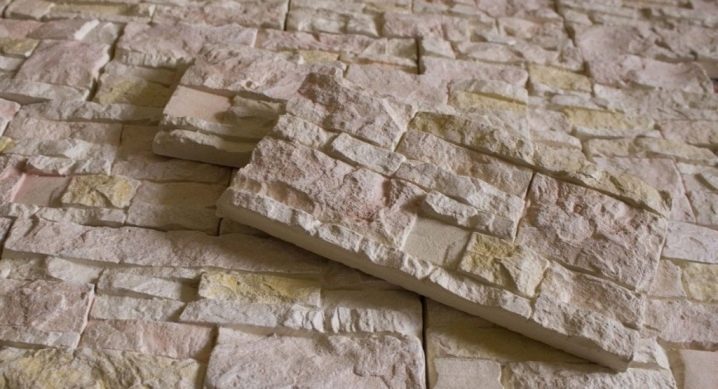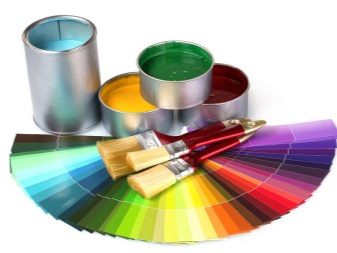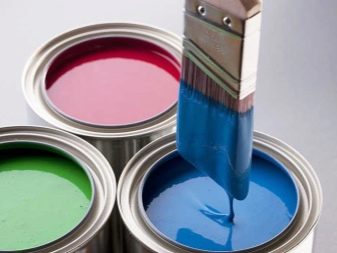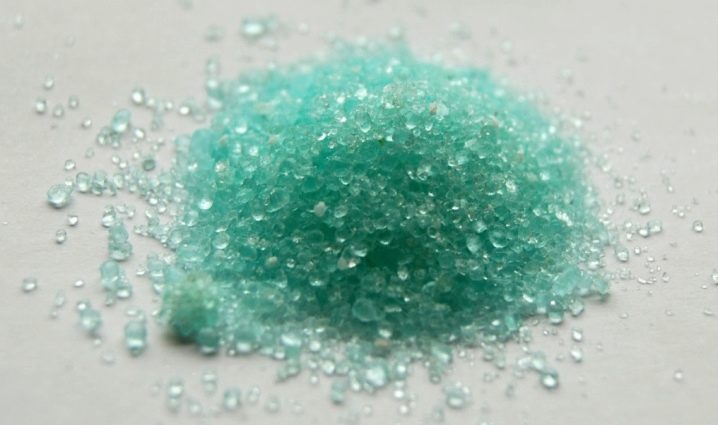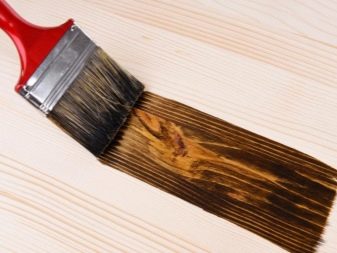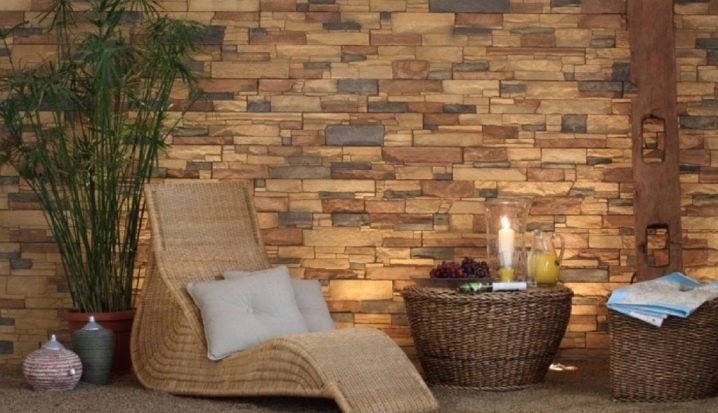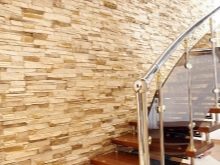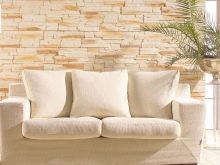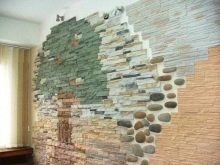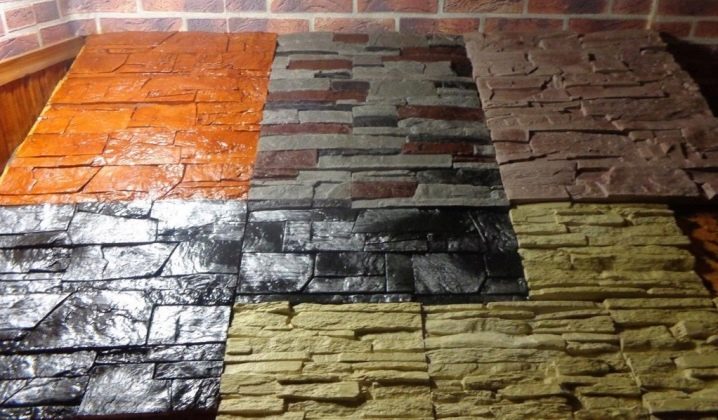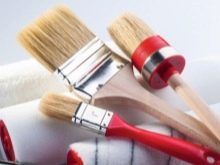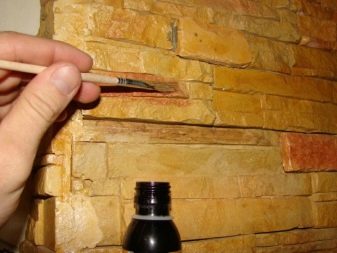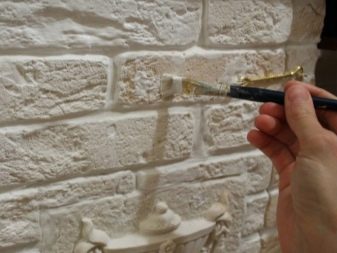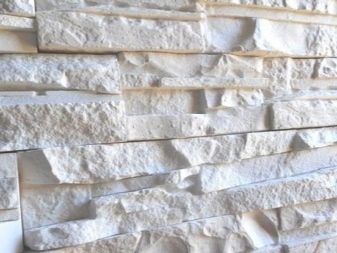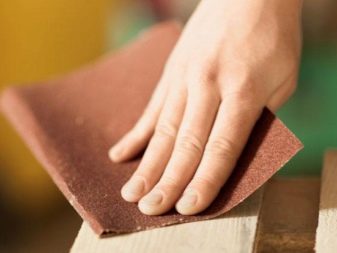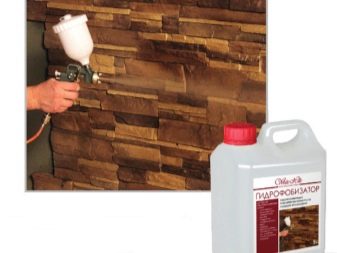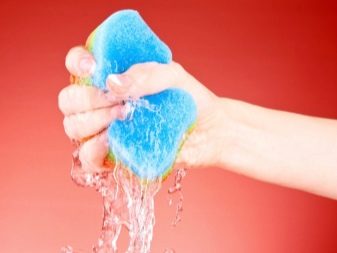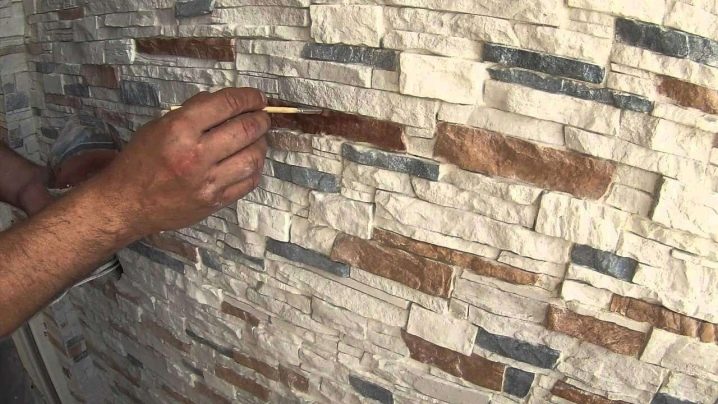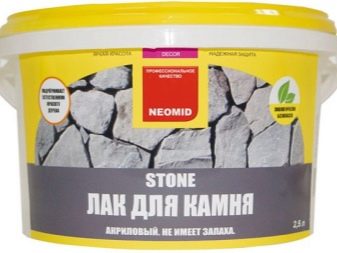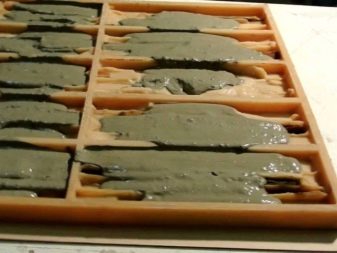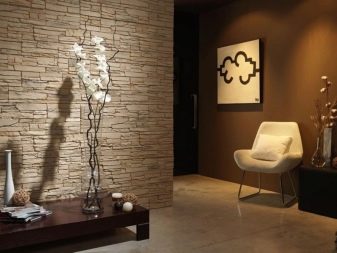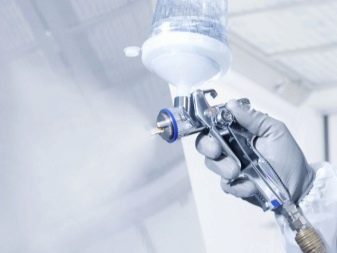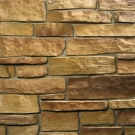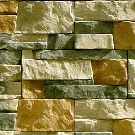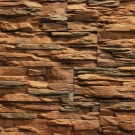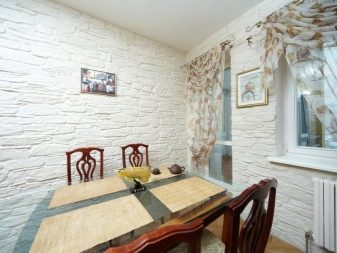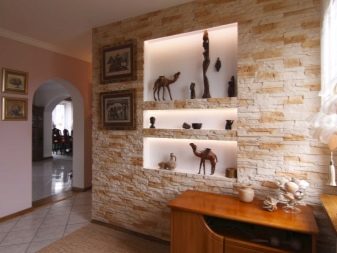The subtleties of painting decorative stone plaster
Sometimes there is a strong desire to change something in the design of an apartment or house. In this case, you can use a plaster stone, the painting of which is not as complicated as it seems at first glance. The use of decorative stone will allow to transform any room, but first you need to deal with the subtleties of staining material.
What to paint?
If raw materials are purchased for finishing, or the material is made independently, the products need painting. First of all, testing of selected compounds is required to understand what color the result will be.
Dyeing is carried out using the following mixtures and solutions:
- Acrylic paint - this aqueous solution is suitable for gypsum stone due to its resistance to external influences, good elasticity, so that no cracks will form on the cladding element.
- Vitriol - copper and iron sulphate acts as an impregnation and helps to increase the strength of parts. Copper sulfate gives the stone a blue hue, and iron - yellow.
- Stain - one-color mixture used for dyeing cement-based materials, as well as plaster stones. Dressing is carried out with an acid stain or wood composition.
In addition, painting is made with other solutions: various varnishes and impregnations with a wet effect, paints, giving the gypsum stone a natural look.
The main thing is to determine the purpose of the material and select a coloring agent depending on it.
Staining recommendations
Proper painting of a stone made of gypsum implies the observance of simple rules:
- parts are pre-dried for 1-2 days;
- old material is polished, otherwise the paint from it will crumble in a short time;
- impregnations are applied according to the instructions on the label - some solutions are applied before the painting procedure, certain types are not combined with certain colors;
- A lacquer coating is added to make the product shine over the paint, but it is not always appropriate - due to this, the natural feeling of the stone is lost.
When you follow these tips, it is possible to protect the decorative stone from the negative impact, corrosion, and the paint layer will last a long time.
Instruments
In order to create a decorative element that attracts attention, it is necessary to use tools that make it possible to paint.
The main devices include:
- airbrush or spray gun;
- brushes and rollers;
- sandpaper or sanding machine.
Most often used for painting airbrush.
Its advantage over the brush is that it sprays the composition, rather than smears it, in the end it turns out an even color without too dark unnatural areas.
With an airbrush, you can give the stone different shades - to do this, simply adjust the ink jet and the distance from the tool to the work surface. A conventional airbrush with a compressor equipped with oil cooling and an automatic pressure regulator will be suitable for painting the material.
A brush very rarely paints the entire facing stone, because the device leaves stains and ugly spots. To highlight any areas of the brush is an excellent tool.
Preparation and painting
Preparation for coloring is carried out depending on the type of material: a previously used stone or a new one. Used products carefully remove the old corrosive layer. Then the stone is polished to eliminate strong surface drops. Facing elements are blown with a compressor and applied impregnation in 2-3 times - thanks to this, during finishing the consumption of coloring compositions will be significantly reduced.
A new stone does not need to be ground and rubbed - it is enough to just wash it and soak it 2 times. In this case, the coloring will take much less time.
No need to use high-precision tools and special technologies.to color the material. First, the composition is prepared from a dry powder, poured the required amount of water indicated on the instructions from the manufacturer. If you do everything wrong, you can get too thin or thick solution - it will be quite inconvenient for them to paint textured gypsum stone.
In the process, you need to paint over all the details, not getting too much beyond the boundaries of each element. As it dries, the paint on the plaster will fade a little. The surface should be varnished to ensure protection. Decorative stone from gypsum is painted with water-soluble paints, so the varnish is selected with the same characteristics: alkyd, matte, pentaphthalic.
Painting methods
There are several methods of painting the material: in bulk and superficial.
The first method is used for self-production of stone. The technology consists in adding coloring pigments to the gypsum solution - as a result, the product is stained from the inside. For painting with this method, mix 1/2 part of the dye with 200 ml of water and the same volume of acrylic primer. Matt varnish is applied to the desired surface of the stone after complete drying.
The surface method is very simple: the finished lining material is coated with a dye from an airbrush. The advantage of this method is the ability to give a decorative stone a desired shade, to create a natural, natural look.
Dressing
There are several ways of interesting painting the surface of decorative plaster stone, with the help of which you can achieve an unusual type of product:
- Under the old marble - the stone made by own hands is dried, and the store bought is placed in a warm dry place and kept for two days. After this, with a flute brush, the surface is impregnated in two layers with heated up linseed oil. After some time, you get a coating with the effect of aging, resembling marble.
- Under the terracotta - the technology is similar to the creation of an old marble coating, only not linseed oil is used, but rosin and lacquer - they are diluted in technical alcohol.
- With bronze tint - gypsum stones are thoroughly impregnated with linseed oil and dried for 8-10 hours. Then two layers of bronze powder diluted in varnish are applied to the material and the stone is dried. Take 10 g of silver nitrate, 100 g of vinegar, 300 g of pure water, a special solution is prepared from these components. The product is re-coated with bronze powder and treated with the prepared solution. After the procedure, the decorative stone is rubbed with a piece of velvet fabric.
- Application of stain - the composition is slightly heated, plaster elements are immersed in it for literally 5-10 seconds and sent to dry.
Thanks to these tips, preparation for painting a decorative stone made of plaster will be productive, and the result of the work will be high-quality and long-lasting.
One way of painting a decorative stone made of plaster is presented in the following video.

